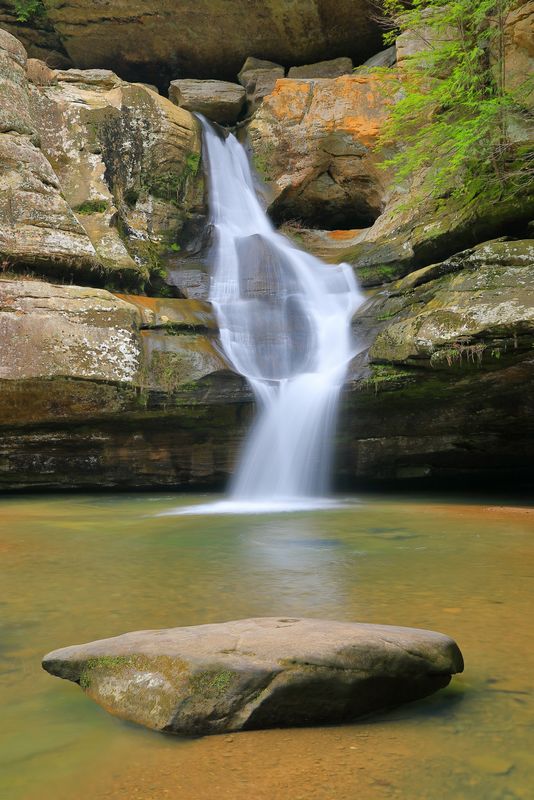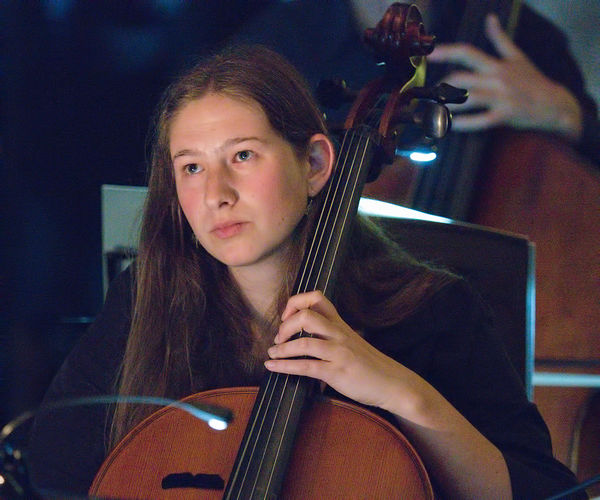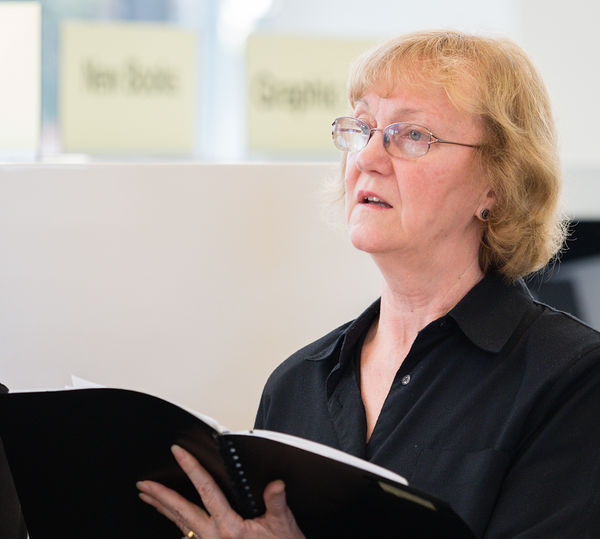Situations Where Aperture-priority or Shutter-priority Work better than manual or Auto ISO + Manual + EC
Jan 18, 2019 17:20:41 #
I have been requested to write an article about the optimum exposure modes that are currently available to most digital photographers (if they have Auto ISO in their camera). I am a huge fan of all manual and the Auto ISO option when I need an automatic exposure mode for rapidly changing ambient light. However, in my article, I would like to include situations where shutter-priority and aperture-priority work better. I realize all the exposure modes can be used to achieve outstanding exposures if you have the time to tweak them, so often none have the advantage. Of course, when time is short in rapidly changing ambient light, manual exposure and Auto ISO is the clear winner as it locks in your set aperture and shutter speed to maintain the depth of field and the shutter speed for sharp images. In constant ambient light, manual exposure is superb when the size of a non-neutral subject varies in the image as it moves closer or further away or as you change focal length to change the size. Manual exposure is also superb when the reflectance of your background varies when panning with the subject. We all know this. But, not to neglect aperture-priority and shutter-priority, are there situations where it works the best? I can think of a few possibilities and I hope you folks can add to this list. Here is my short list of situations.
1. Auto-bracketing for HDR
Although I don’t do as much HDR as I once did due to the wider range of light captured with digital cameras and the power of highlight/shadow controls in software, when I do, I lock in the aperture and ISO and let the shutter speed vary. Although I typically shoot my HDR sequences by manually adjusting the exposure, a worthwhile auto method is aperture-priority as it locks in the aperture and ISO, and lets the shutter speed vary to shoot the HDR exposure sequence.
2. Using Flash as the Main light when the ambient light is changing
One place I do use aperture-priority is when I am using flash to light up an object, perhaps a hoodoo in southern Utah, at sunset. Obviously, at sunset the ambient light will gradually diminish as darkness approaches. Since I am using flash on the foreground, I find I can use aperture-priority to adjust for the dimming ambient exposure that lets the shutter speed slow while using my flash on manual to be the main light illuminating the subject. Since my flash is on manual, I don’t want the ISO or aperture to vary as that will affect my flash exposure, while shutter speed does not affect the flash exposure.
3. Shutter-priority when you want to vary the depth of field
Since shutter-priority locks in the shutter speed while varying the aperture, it would be useful when you wish to shoot a subject using different apertures. While a lot of possibilities don’t come to mind right now, using different depth of field for a flower shot would be a place where it is desirable to use shutter-priority and let the aperture vary.
Can the hogs add some other situations where aperture or shutter-priority work better than manual or the Auto ISO option? Again, in many cases, they work equally as good, so I am looking for situations where shutter or aperture-priority clearly works better.
1. Auto-bracketing for HDR
Although I don’t do as much HDR as I once did due to the wider range of light captured with digital cameras and the power of highlight/shadow controls in software, when I do, I lock in the aperture and ISO and let the shutter speed vary. Although I typically shoot my HDR sequences by manually adjusting the exposure, a worthwhile auto method is aperture-priority as it locks in the aperture and ISO, and lets the shutter speed vary to shoot the HDR exposure sequence.
2. Using Flash as the Main light when the ambient light is changing
One place I do use aperture-priority is when I am using flash to light up an object, perhaps a hoodoo in southern Utah, at sunset. Obviously, at sunset the ambient light will gradually diminish as darkness approaches. Since I am using flash on the foreground, I find I can use aperture-priority to adjust for the dimming ambient exposure that lets the shutter speed slow while using my flash on manual to be the main light illuminating the subject. Since my flash is on manual, I don’t want the ISO or aperture to vary as that will affect my flash exposure, while shutter speed does not affect the flash exposure.
3. Shutter-priority when you want to vary the depth of field
Since shutter-priority locks in the shutter speed while varying the aperture, it would be useful when you wish to shoot a subject using different apertures. While a lot of possibilities don’t come to mind right now, using different depth of field for a flower shot would be a place where it is desirable to use shutter-priority and let the aperture vary.
Can the hogs add some other situations where aperture or shutter-priority work better than manual or the Auto ISO option? Again, in many cases, they work equally as good, so I am looking for situations where shutter or aperture-priority clearly works better.
Manual exposure works well for this falls as changing the composition does not affect the exposure as long as the ambient does not change.

(Download)

(Download)
Clouds dim the ambient quickly

(Download)
Jan 18, 2019 17:49:15 #
I would not use shutter priority when depth of field is my main concern. I would use aperture priority so that I can directly control the f/stop.
I have not been able to wrap my head around the "passive" approach of changing one setting when it's a different one that is of most importance. I even hosted a topic to discuss this conundrum https://www.uglyhedgehog.com/t-563966-1.html
https://www.uglyhedgehog.com/t-563966-1.html
I might use shutter priority if I'm shooting distant birds in flight, where depth of field is of less concern than something in close, but truthfully, once I learned about auto ISO, there was no going back to Av or Tv. If I was using a camera without the ability to set shutter and aperture manually while engaging auto ISO, I would use a priority mode.
Other considerations might be how quickly and easily one can access the options. With my Canon T3i, it took two hands to change aperture when in manual mode. With my Panasonic G7 and my Olympus EM10, there is a dedicated knob for each, right on top of the camera (one of the knobs is also the shutter button). With the EM10, I have set a shortcut button for quick access to ISO when I need to take it off auto (to compensate for backlighting or other tricky exposures such as snow, etc).
I have not been able to wrap my head around the "passive" approach of changing one setting when it's a different one that is of most importance. I even hosted a topic to discuss this conundrum
 https://www.uglyhedgehog.com/t-563966-1.html
https://www.uglyhedgehog.com/t-563966-1.htmlI might use shutter priority if I'm shooting distant birds in flight, where depth of field is of less concern than something in close, but truthfully, once I learned about auto ISO, there was no going back to Av or Tv. If I was using a camera without the ability to set shutter and aperture manually while engaging auto ISO, I would use a priority mode.
Other considerations might be how quickly and easily one can access the options. With my Canon T3i, it took two hands to change aperture when in manual mode. With my Panasonic G7 and my Olympus EM10, there is a dedicated knob for each, right on top of the camera (one of the knobs is also the shutter button). With the EM10, I have set a shortcut button for quick access to ISO when I need to take it off auto (to compensate for backlighting or other tricky exposures such as snow, etc).
Jan 18, 2019 17:54:30 #
Linda From Maine wrote:
I would not use shutter priority when depth of fie... (show quote)
Thanks for mentioning the access options. That should be a part of my article. At first I did not prefer Auto ISO with Canon as there was no way to use exposure compensation, but now new models have it. But the EC was hidden in the menus, so that was combersome, until I figured out I could assign EC to the set button and now it is easy to adjust and fast.
Jan 18, 2019 17:59:14 #
John Gerlach wrote:
Are you allowed to say for what publication or use this is?Thanks for mentioning the access options. That should be a part of my article...
Jan 18, 2019 18:00:55 #
I shoot classical music concerts, where the light levels can be all over the place and are usually very low.
Nowdays shooting is always done in aperure priority, and auto ISO. I do set the upper limit for the auto ISO.
The auto ISO in aperture priority mode does exactly what I would do, ie 1/focal length (35mm FOV equivalent) for the shutter speed.
The bodies I use have extreemly good image stabilisation allow ing one to shoot hand hels at lower shutter speeds.
The lens almost wide open and I will take whatever shutter speed I can get. I may dial (the front dial on the camera) in some exposure compensation depending on the live histogram in the viewfinder.
With your permissioin I can post a couple examples.
Nowdays shooting is always done in aperure priority, and auto ISO. I do set the upper limit for the auto ISO.
The auto ISO in aperture priority mode does exactly what I would do, ie 1/focal length (35mm FOV equivalent) for the shutter speed.
The bodies I use have extreemly good image stabilisation allow ing one to shoot hand hels at lower shutter speeds.
The lens almost wide open and I will take whatever shutter speed I can get. I may dial (the front dial on the camera) in some exposure compensation depending on the live histogram in the viewfinder.
With your permissioin I can post a couple examples.
Jan 18, 2019 18:18:24 #
RichardTaylor wrote:
I shoot classical music concerts, where the light ... (show quote)
Yes, I would love to see the examples.
Jan 18, 2019 18:20:23 #
Linda From Maine wrote:
Are you allowed to say for what publication or use this is?
I write a regular column for Nature Photographer Magazine and I am thinking about contributing to the PSA Journal as many of my friends are members of that fine organization.
Jan 18, 2019 18:21:26 #
John Gerlach wrote:
Fantastic!I write a regular column for Nature Photographer Magazine and I am thinking about contributing to the PSA Journal as many of my friends are members of that fine organization.
Jan 18, 2019 18:22:06 #
mwsilvers
Loc: Central New Jersey
John Gerlach wrote:
Thanks for mentioning the access options. That should be a part of my article. At first I did not prefer Auto ISO with Canon as there was no way to use exposure compensation, but now new models have it. But the EC was hidden in the menus, so that was combersome, until I figured out I could assign EC to the set button and now it is easy to adjust and fast.
I have a Canon 7D Mark II. and use the lever surrounding the joystick with the main wheel for changing EC in manual mode with auto ISO.
Jan 18, 2019 18:32:15 #
Interesting. I don't have the lever surrounding the joystick on my Canon 5D Mark IV, but good to know there is a way to make the EC easier to adjust. It is amazing how many things on the camera can be set to do this and that.
mwsilvers wrote:
I have a Canon 7D Mark II. and use the lever surrounding the joystick with the main wheel for changing EC in manual mode with auto ISO.
Jan 18, 2019 18:32:32 #
John Gerlach wrote:
Yes, I would love to see the examples.
Thanks
These were all shot, hand held, with a M4/3 body (crop factor 2) in aperture priority with a 40-150 (80-300mm in 35mm FOV terms) f2.8 lens, with the lens wide open.
#1 In a concert - the light levels were extremly low.
#2 At a community concert, in a library - An alto (my wife) - the light levels here were ok.
.
#1 Pushing it - Battery operated music lighting - 1/50 @ f2.8, ISO 25600 F=125mm

(Download)
#2 1/320 @ f2.8 ISO 2000 and F=150mm

(Download)
Jan 18, 2019 18:36:08 #
mwsilvers
Loc: Central New Jersey
John Gerlach wrote:
Interesting. I don't have the lever surrounding the joystick on my Canon 5D Mark IV, but good to know there is a way to make the EC easier to adjust. It is amazing how many things on the camera can be set to do this and that.
Because of this auto ISO EC feature, fairly new in Canon cameras, I see little advantage in shooting in Aperture of Shutter priority. The main advantage of using manual mode with auto ISO and EC is that I'm always in the right mode and never have to be concerned about changing modes to have full control over my aperture or my shutter speed. EC in those semi auto mode does not give you that full control. EC in aperture priority (Av) adjusts both auto ISO as well as shutter speed. In shutter priority (Tv) EC adjusts both auto ISO and the aperture. In manual mode with auto ISO, EC changes ISO only and allows you to set a specific ISO value without affecting the settings of either the aperture or shutter speed. As a result I'm not sure why more people don't take advantage of this additional, and very flexible, functionality.
Jan 18, 2019 19:20:05 #
mwsilvers wrote:
Because of this auto ISO EC feature, fairly new in... (show quote)
Your thoughts are identical to mine for most photo situations where I want an auto exposure mode. Actually, I think of it as semi-auto exposure as you manually set the shutter speed and aperture, and then the camera adjusts the ISO automatically. But, I don't think most photo teachers call it that, so I use auto too.
Jan 18, 2019 20:11:57 #
mwsilvers
Loc: Central New Jersey
John Gerlach wrote:
Your thoughts are identical to mine for most photo situations where I want an auto exposure mode. Actually, I think of it as semi-auto exposure as you manually set the shutter speed and aperture, and then the camera adjusts the ISO automatically. But, I don't think most photo teachers call it that, so I use auto too.
Yes, the camera does adjust the auto ISO automatically, but EC allows you to modify that automatic setting to meet your specific requirements. Is it still really auto if you're using EC in that scenario to set it to an explicit value? Where all comes into play of course is in fast-changing lighting conditions where the auto ISO will change to meet those new conditions while still maintaining the same exact exposure by raising or lowering the ISO value, and taking into account the same amount of EC.
Jan 18, 2019 20:59:17 #
John Gerlach wrote:
I have been requested to write an article about th... (show quote)
Setting aside auto-ISO (which means the photographer feels image quality is optional)
there are really four approaches:
1. Automatic exposure (i.e., Program Mode).
2. Semi-automatic exposure: aperture priority or shutter priority
3. Semi- or automatic exposure with manual overide: (PM, AP or SP) plus manual exposure compenstation.
4. Manual exposure: manual mode
I would argue that for casual photographers who only take one meter reading,
method 3, Exposure Compensation is the most efficient way of working.
The choice of whether to use AP, SP, or PM depends on whether you have particular
preferences for aperture, shutter or neither.
You care about aperture when any of:
* You want a lot of depth-of-field
* You want very little DoF
* You want the sharpest aperture for a given lens
* You want to avoid excessive diffraction (e.g., f/22 on a FF)
You care about shutter speed when:
* You want to blur motion
* You want to stop motion
* You are using flash and need to syncrhonize
* You are worried about shutter "artifacts"
* You are hand-holding the camera, or using it on
an unstable platform (autombile, aircraft, etc)
Of course, it depends on exactly how the AP, SP and PM work on your camera:
for example, whether they will set a shutter speed that is too long for hand-holding.
(And we shouldn't forget that the highest resolution and most adjustable cameras in
existence, view cameras, only have manual mode.)
The best way of determining exposure is to take multiple readings with
a hand-held spot meter, as recommended by Ansel Adams, Minor White, etc.
The spot meter mode of cameras is not very good and varies a lot with the lens.
All forms of averaging, matrix metering, etc. are "guesstimates" designed to
work with "average scenes".
And of course, the camera has no idea what it is looking at, or what tone the subject
actually is. Left to its own devices, it will place whaterver it meters on a
middle tone. What else can it do?
So in a close-up shot, all skin is olive skin -- unless you use EC or MM.
If the photographer has preferences as to how the scene is represented, he had
better make them known to the camera. Digital cameras are no better than film
camears were at reading the photographer's mind.
Sometimes exposure can be fixed in post-processing---somtimes not. Detail lost
in a blown highlight is gone forever. Digital cameras can blow highlights
just as well as film cameras--even a little better, since B&W film had enormous
dynamic range (and scanning of film negatives means that today all of this dyanmic
range is now accessible to printing).
The problem with the "fix it in PhotoSlop" approach to exposure is that by the time
the camera-user gets home to his computer, the scene is just a memory: there's no way
to take another light meter reading or another exposure. He has forgotten which shadows
and highlights actually had detail, and what the tones of areas actually were.
He's no longer a photographer, or even a "plein air" painter---he's a studio painter
working from memory. That's about as far from straight photography as one can get.
What matters is the final image. He should visualize it before he makes the exposure,
and everything he does should be aimed at achiving the final image that he visualized.
Its not a "make it up as you go along" type of job, becuase every decision along the way
--including in many cases exposure--rules out many possible final images.
To get somewhere, you generally have to know where your going. Wrong turns can
leads to dead ends.
Also, it should be remembered that no way of viewing or printer an image file shows you
all the information that is present in---or that has been lost and is missing from--an image
file. What looks great on a monitor often looks fuzzy, pixellated when printed. And
some monitors are much better than others (e.g., OLED screens have more dyanmic range
than LCD/LED ones do). Nothing is sillier than making an HDR image to display on
an LCD monitor!
So in photography, it is still true that what-you-see is almost never what-you-get, and image
defects often are not caught until after the image is printed.
If you want to reply, then register here. Registration is free and your account is created instantly, so you can post right away.


